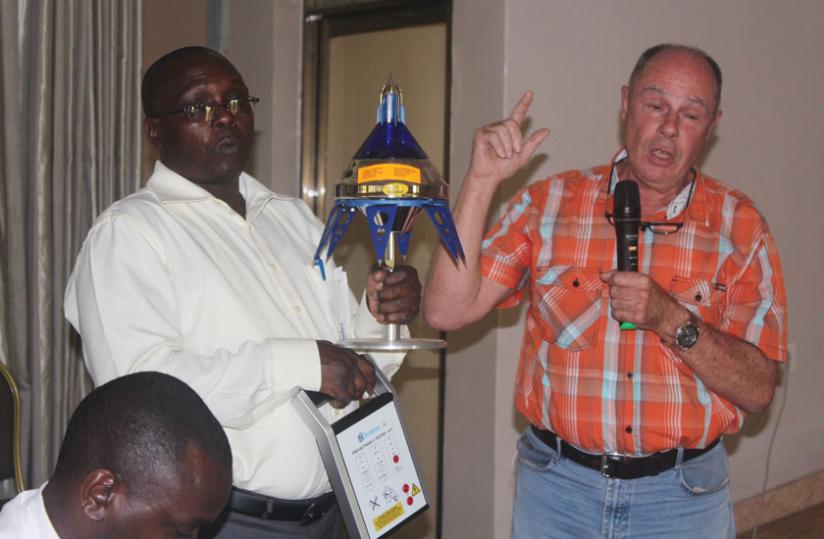The past three months have seen a significant increase in the number of deaths and injuries resulting from lightning strikes in various parts of the country. Going by available figures, lightning was by far the leading cause of deaths induced by natural disasters between June and September 5.


The past three months have seen a significant increase in the number of deaths and injuries resulting from lightning strikes in various parts of the country.
Going by available figures, lightning was by far the leading cause of deaths induced by natural disasters between June and September 5.
Out of the 32 individuals who lost their lives during the period due to disasters, 21 were struck by lightning, according to statistics from the Ministry of Disaster Management and Refugee Affairs (Midimar).
This means that lightning alone was responsible for over 65 per cent of the deaths.
Earlier, 19 people died of lightning while another 43 sustained injuries and 23 were left traumatised due to lightning strikes between January and April this year. Fifty-seven cows, two goats and two pigs were also killed in the fatalities.
Last year, lightning killed 28 people and injured another 53, according to statistics.
Yet the risk of losing more lives in the coming months is even higher as experts forecast a harsh rainy season which might increase the risks of lightning.
Awareness
Midimar officials say they are working hard to ensure that risks of losing lives due to lightning are considerably reduced.
Mass sensitisation campaigns are ongoing to educate people about how best they can protect themselves against lightning.
"We are sensitising people in order to avoid such deaths and injuries,” Philippe Habinshuti, Midimar’s Director for Disaster Management, says.
How to Survive a Lightning Strike. Source: MinuteEarth/Youtube
He advises residents to remain indoors whenever it rains, and avoid seeking shelter under isolated trees as well as open spaces.
A document developed by the ministry on the prevention of lightning also lists keeping off bicycles and motorcycles during rain, avoiding wet areas, refraining from standing near open windows as well as avoid handling electrical equipments such us telephones, radios and TV sets to avoid the risk of ligtning strikes.
Residents should also steer clear of tall structures such as towers, tall trees, fences, telephone masts, and power lines during rain.
But the most plausible solution remains the installation of lightning conductors on all public buildings and residential houses, officials and experts say.
However, the conductors remain hardly accessible in most parts of the country and the majority of Rwandans cannot afford them.
Available conductors on the local market cost between Rwf50,000 and 100,000–a price far beyond the reach of many Rwandans.
"The most challenging thing remains availability, accessibility and affordability of lightning conductors,” Habinshuti says.
Sub-standard lightning conductors might have also hit the local market, raising fears that they might not be effective in preventing lightning fatalities, Habinshuti adds.
Meanwhile, addressing a stakeholders’ meeting on lightning prevention yesterday, Didace Musoni in charge of Data Observation Quality Control and Processing at Rwanda Metrology Agency said they have two satellite image receivers so far and a radar that is being set up and will be able to scan areas closer to 200 km in radius to help determine the levels of instability in the air.
The same meeting which convened in Kigali stressed that standards should be strictly observed since some counterfeit anti-lightning rods had started making it on the market, calling upon responsible authorities to be observant.
Rwanda Standards Board pledged to increase monitoring and testing the rods as well to insure they meet required standards, though Olivier Mukeshimana, the board’s Standards Officer said that there are some people who smuggle them into the country using different tricks.
Residents wary
Onesphore Gandika recalls how he miraculously survived a lightning strike last year. The 64-year-old resident of Kinunu village in Boneza Sector, Rutsiro District, Western Province, says he has since taken steps to avoid such incidents. But he is concerned that he lives in an area prone to lightning.
"I fear for my life. This area is so vulnerable to lightning,” Gandika says.
He describes how a lightning bolt struck his house last week, affecting his electrical installations and blowing his bulbs.
Gandika says lightning conductors are not only inaccessible but also expensive.
Rwanda is geographically located in the inter-tropical zone, an area prone to lightning, according to experts.
Bonfils Safari, a physics professor at the University of Rwanda, says the inter-tropical zone is extremely vulnerable to lightning strikes.
Global estimates indicate that about 100 lightning bolts strike the Earth every second. More than 70 per cent of them take place in tropical and sub-tropical regions.
The country’s topography (mountainous) makes it more vulnerable, according to experts.
This could in part justify why the most hilly districts of Rutsiro, Rusizi, Karongi and Nyamasheke have proved to be the most vulnerable parts of the country.


